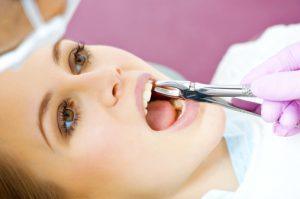
When you get your wisdom teeth pulled, you might be unsure of what you can eat afterward. Shrimp is a nutritious and protein-packed option — but can you eat it while you are recovering?
The short answer is — yes, however, you should wait until the initial recovery phase has passed. There are some other factors you will also want to keep in mind when considering whether to eat shrimp or either kind of seafood after extraction.
In this article, we’ll break down when and how you can get back to eating shrimp after wisdom tooth extraction.
So can I eat shrimp?
Yes, you can eat shrimp after a wisdom tooth extraction, but timing and preparation are important. Avoid shrimp during the first 1–2 days after surgery when your mouth is healing and stick to soft foods.
Once the initial swelling subsides and you feel ready to chew, shrimp can be a good option if it’s properly prepared—soft, thoroughly cooked, and cut into small pieces. Avoid fried or heavily seasoned shrimp to prevent irritation. Always follow your dentist’s recommendations for the safest recovery.
When can you eat shrimp after wisdom teeth removal?

It’s best to abstain from eating shrimp during the first 1-2 days after your wisdom tooth surgery. During that time you’ll want to stick with very soft foods and liquids, like mashed potatoes, yogurt, and soup. This will take care that larger food particles don’t get stuck in the surgical site.
Once the initial swelling dies down and you feel like you can comfortably chew (this typically happens after a few days) you can consider once again enjoying your favorite seafood morsel.
Just make sure to be aware of how your mouth feels — you don’t want to experience any discomfort or irritation, and if you do, just put the shrimp aside for another day or two.
And remember, always follow your dentist’s advice first.
How to prepare shrimp for easy eating
If you want to start eating shrimp again after getting your wisdom teeth out, there are some precautions you can take to avoid complications. Let’s have a loo at them now:
- Cook thoroughly: You should always cook your shrimp thoroughly, but you might want to make sure it’s extra well done so that it isn’t chewy.
- Cut into small pieces: Cut your shrimp up so that you reduce the amount you have to chew, thus limiting irritation to the surgical site.
- Avoid breaded shrimp: Don’t eat shrimp with breading until the site of extraction is fully healed — as the little crumbs can get into the wound.
- Go light on the spice: Heavy seasonings or spices can further irritate your gums around the wound.
By making sure your shrimp is well cooked and plainly seasoned, you can probably eat it as part of your recovery diet — but again, consult your dentist first.
Other foods to eat
In the first 1 to 2 days after wisdom teeth removal, you’ll want to stick to soft foods that don’t require a lot of chewing, and that won’t irritate the wound. The Mayo Clinic recommends eating soft foods and liquids for the first 24 hours. Here are some of the recommended options:

- Broths and Soups: Warm (not hot) soups provide nutrition without requiring chewing. Strain out any chunky ingredients during the early phase.
- Mashed Foods: Mashed potatoes, avocado, or even pureed vegetables are filling and easy on the mouth.
- Yogurt and Smoothies: These are soothing and nutrient-packed. Avoid using a straw to prevent dry socket.
- Puddings and Applesauce: These soft, sweet options are gentle on your gums and require no chewing.
We have separate articles about avoiding eating on the tooth extraction side of your mouth, and avoiding alcohol and coffee after extraction.
What about other seafood?
Just like shrimp, can generally be included in your post-extraction diet, (after 1-2 days) but it’s important to choose options that are soft and easy to eat. In the table below you can see examples of safe seafood choices and others that you should avoid:
Safe | Better Wait |
|
|
Final thoughts
When reintroducing foods like shrimp after wisdom tooth extraction, listen to your body and proceed cautiously. If chewing causes discomfort or the area feels irritated, stick with softer foods for a little longer.
Always follow your dentist’s instructions, as they know your specific recovery needs best. Call your dentist if you experience unexpected pain or bleeding from the extraction site. But apart from that, happy healing!
es, you can eat seafood after tooth extraction, but stick to soft options like steamed fish or tender shrimp. Avoid fried, tough, or heavily seasoned seafood, and wait until the initial recovery phase (1–2 days) has passed.
While rice should be avoided after wisdom teeth removal, some sushi menu items are safe to enjoy. Sashimi, for example, is soft, easy to eat, and offers many health benefits due to its high protein content. Just skip the wasabi, as it can irritate the healing wounds.
Salmon is one of the healthiest fish you can eat and an excellent choice after dental surgery. Its soft texture allows it to fall apart easily, making it simple to swallow with minimal chewing. Plus, it’s packed with nutrients to support your recovery.
The best fish to eat after tooth extraction are soft, flaky options like salmon or cod. They’re rich in protein and omega-3 fatty acids, which help reduce inflammation and support healing.
https://www.mayoclinic.org/tests-procedures/wisdom-tooth-extraction/




